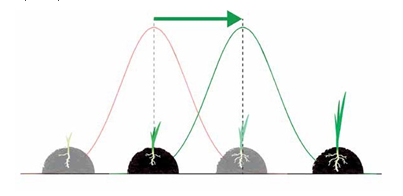Picking microbial teams for superior plant health and crop protection
by Holly Meadows-Smith, Manager, Business Development, BioConsortia, USA

Holly Meadows-Smith of BioConsortia introduces the breakthrough Advanced Microbial Selection process that combines disciplines of plant breeding, directed selection and microbiology for the development of effective microbial consortia products.
In his 2012 retrospective of the Green Revolution (GR), Prabhu Pingali, then Deputy Director of Agricultural Development at the Bill and Melinda Gates Foundation, revisits the statistical and qualitative impacts of this era of crop productivity growth. He then goes on to use this data to frame what he describes as ‘GR 2.0’. While many of the same challenges, such as poverty and food insecurity, that fostered the original GR are still afflicting many communities, Pingali addresses newly acknowledged challenges of the sustainability of agricultural systems and its impact on climate change.
With investment in agriculture increasing, both politically and financially, Pingali’s thoughts on GR 2.0 are starting to be reflected within the industry. The move towards agricultural biologicals – natural products, plant extracts and agents derived from beneficial bacteria and fungi – has become common place. Most large seed treatment and crop protection companies now have internal research programmes focused on these naturally sourced solutions, since synthetic and chemical inputs are facing tougher regulations worldwide due to the conceived harsh impact on agricultural land and the rest of the environment.

Biological interaction
BioConsortia is a biological company developing microbial consortia products – combinations of bacteria and fungi with distinct or complementary functions in one solution. The complexity of biological interaction and naturally diverse soil environments encourage the thinking that combinations of beneficial microbes may produce more effective biological treatments than have been delivered to market thus far.
Conventional research methods for discovering active bacteria and fungi involve in-vitro screening of individual isolates stored in microbial libraries and in planta assays to determine if on-plate bioactivity translates into actual plant response. In cases of developing multi-microbe treatments in this way, approaches include either natural or artificial ‘stacking’ of individually isolated microbes, which is complicated by the magnitude of combinations one could create and the innate competition of certain microbes.

The company utilizes a patented discovery process called ‘Advanced Microbial Selection’, or simply AMS. The elegant selection system employs natural plant-microbe association, using the plant as a magnet for beneficial microbes, guided by application of environmental stresses to target specific crop challenges. The foundation of the AMS process is based on the equation: Genotype x Environment x Microbiome = Phenotype. By manipulating the microbiome variable and identifying targeted phenotypic changes, the AMS process leads scientists toward the collection of organisms that are providing benefit to a plant.
Discovery begins with plant-microbe selection from diverse soil samples to capture a variety of organisms that are capable of plant colonization. From there, multiple rounds of plant- microbe selection are performed in controlled systems, with microbiomes from phenotypically superior plants transferred and moved forward. Superior plants are identified by several yield-relevant phenotypic indicators, such as the ability of the plant to withstand an applied disease pressure. The iterative growth rounds evolve the microbiome of these superior plants, using ‘Directed Selection’ to shift the community composition toward one enriched with beneficial microbes.

Efficient processing
In contrast to traditional strategies, microbes are not isolated until the end of the AMS process. The previous selection rounds also work as a filter, performing a high-throughput screen of the trillions of microbes from initial starting soils and delivering a few hundred plant-associated strains for isolation. At this stage, individual microbes making up a team that has accumulated on and within a superior plant are identified through sequencing. Standard 16S rRNA gene sequencing is the most commonly used, however, as technologies improve and newer services come to market, other genomic targets and techniques are being incorporated for higher resolution and more efficient processing. This information is coupled with microbial phenotype data and microbiome data collected throughout the selection rounds, which visualizes changes in frequency of specific microbes as the microbiome progressed through selection rounds. Together this data is used to reconstruct manageably sized consortia that replicate or improve on the performance seen in the final selection round. Final results and temporal microbiome analysis feedback into the discovery process for a better understanding of future experiments using AMS.
Effective microbial teams
The initial emphasis of discovery is on effective microbial teams rather than individual entities. This results in a group of microbes that colonize and confer benefits onto a plant while also having compatibility with one another, and with any standard chemistries that were incorporated into the selection process. Similarly, the AMS process can be amended to select microbes that enhance the activity of other inputs, from fertilizers to seed treatments.
